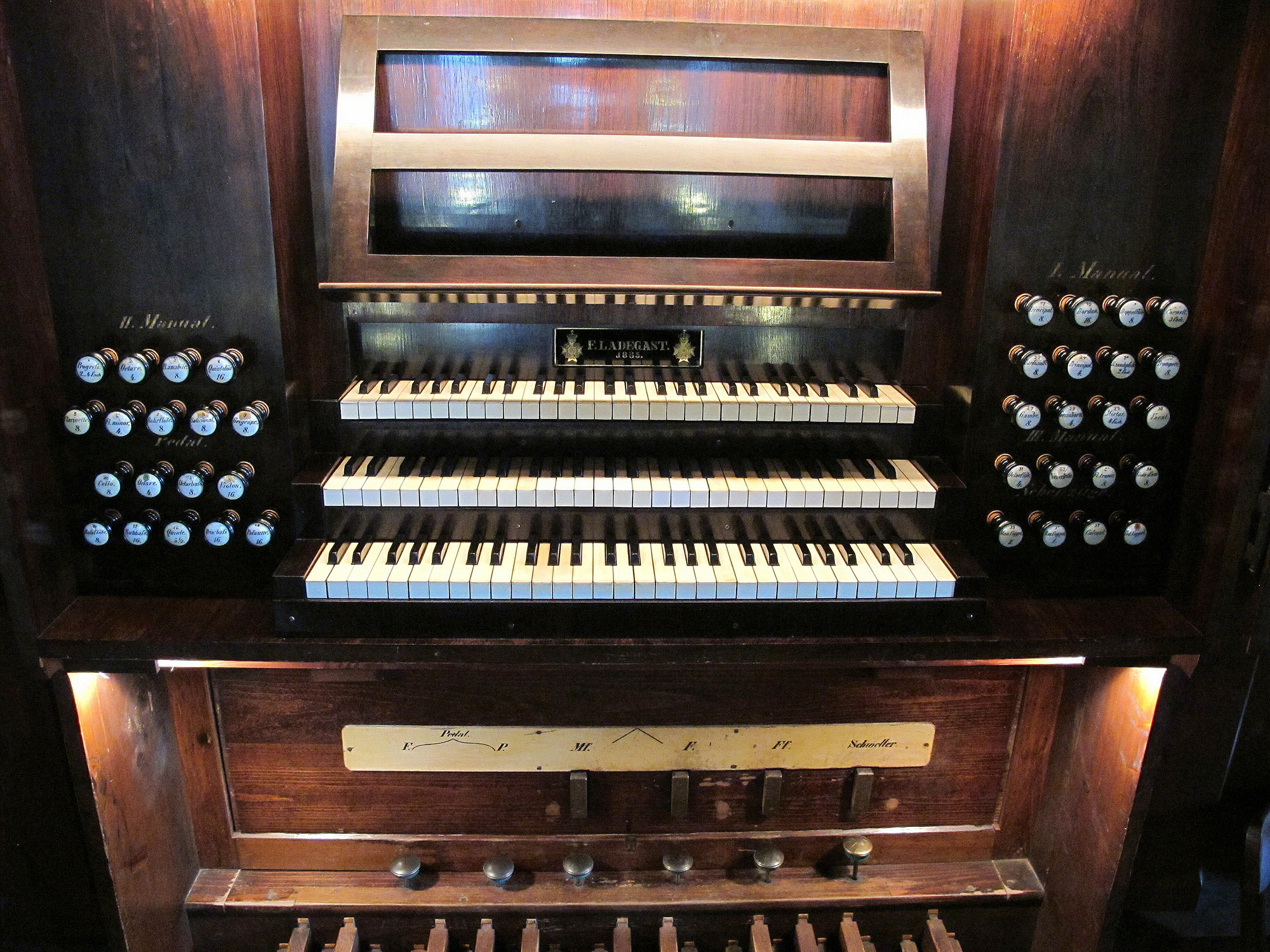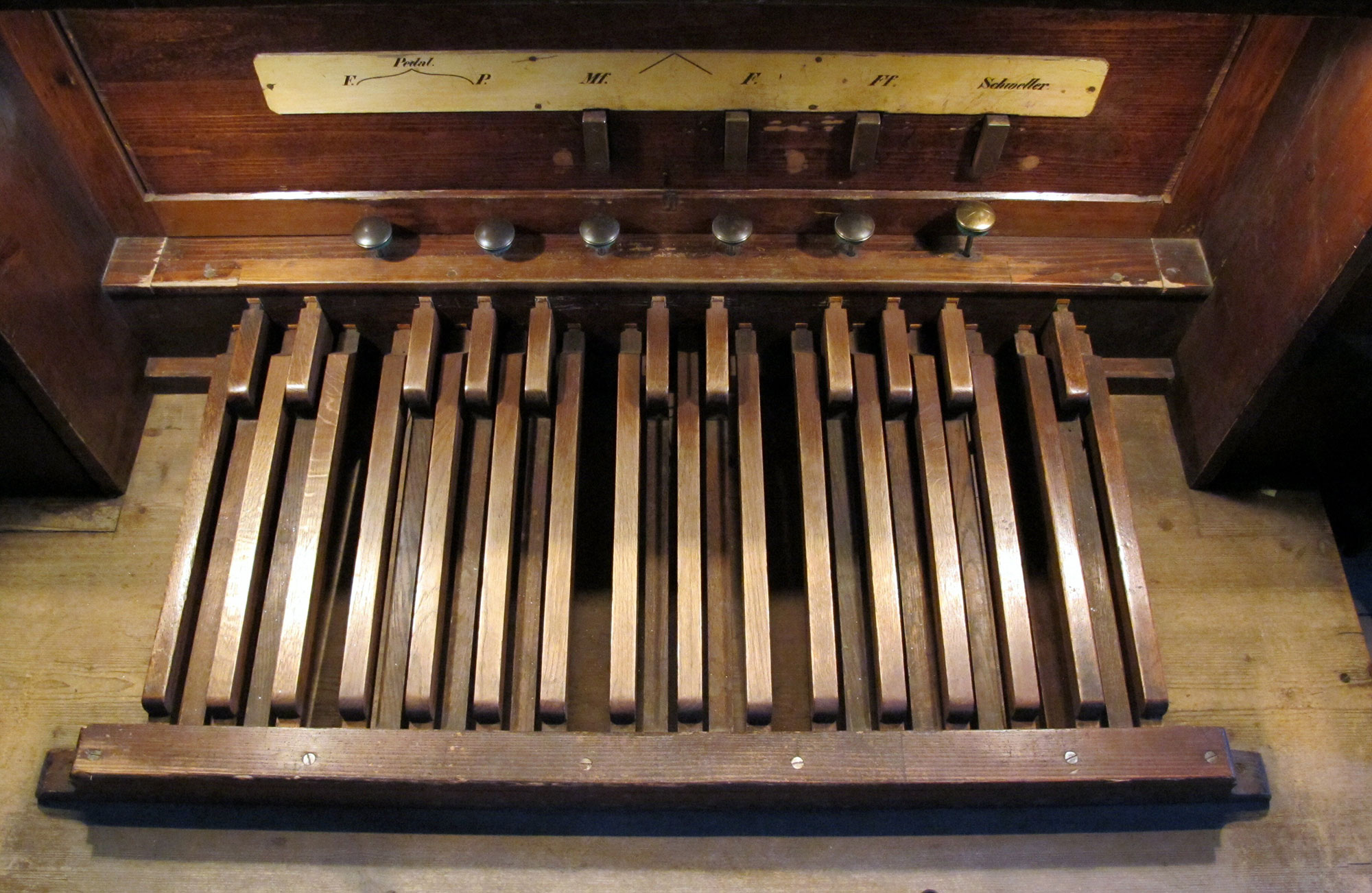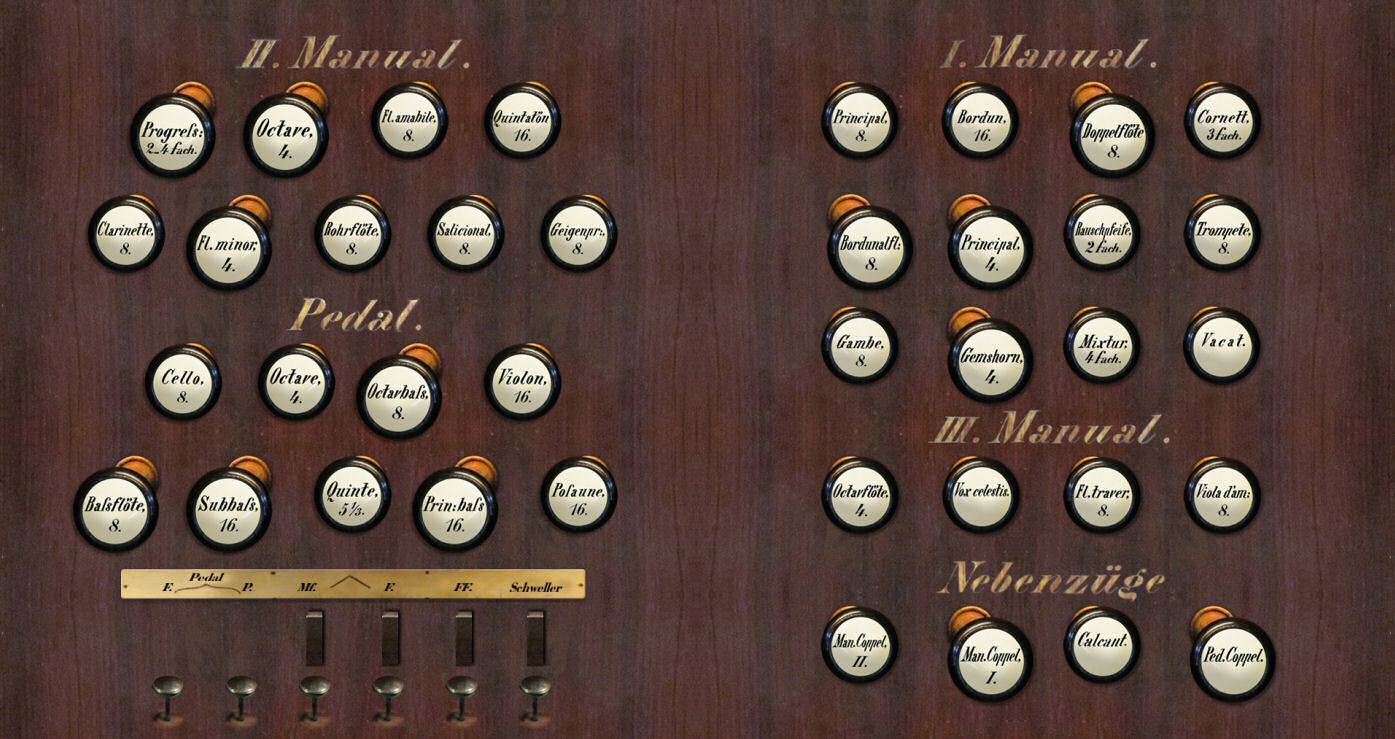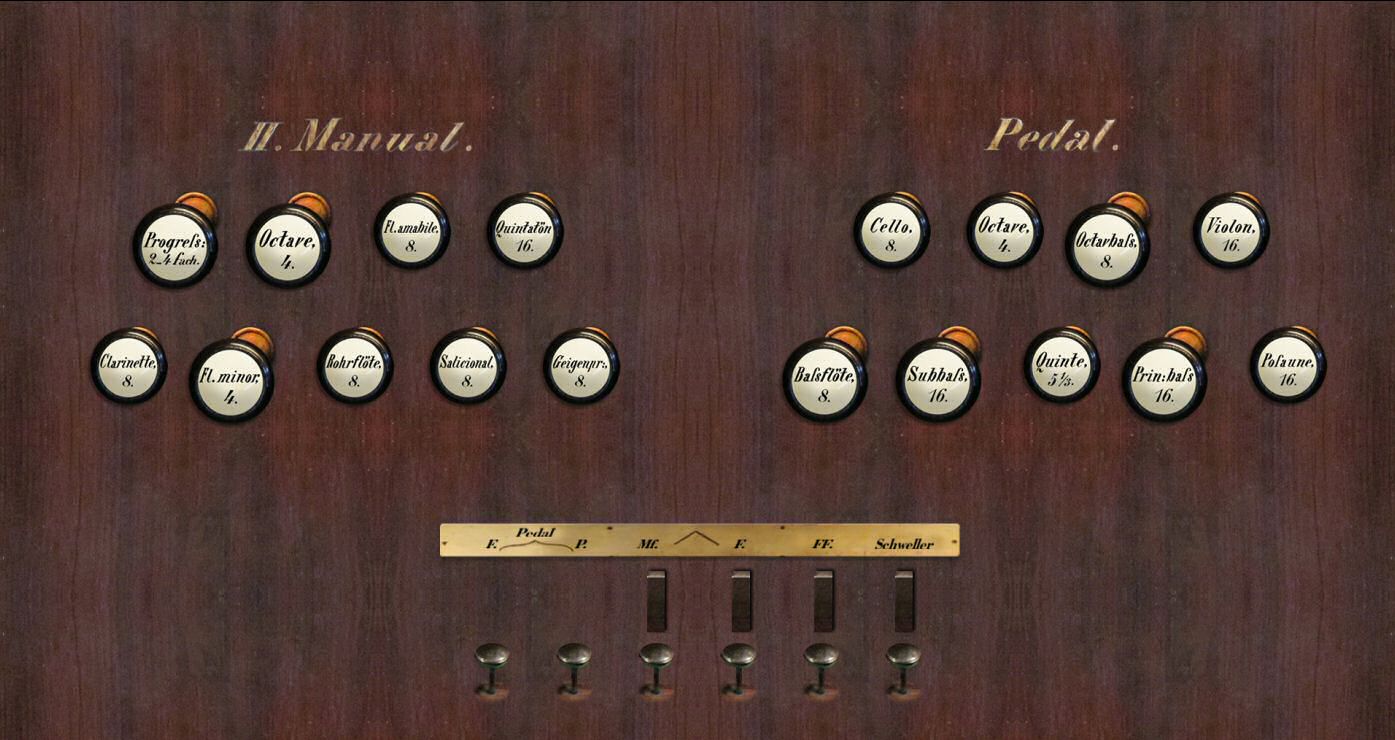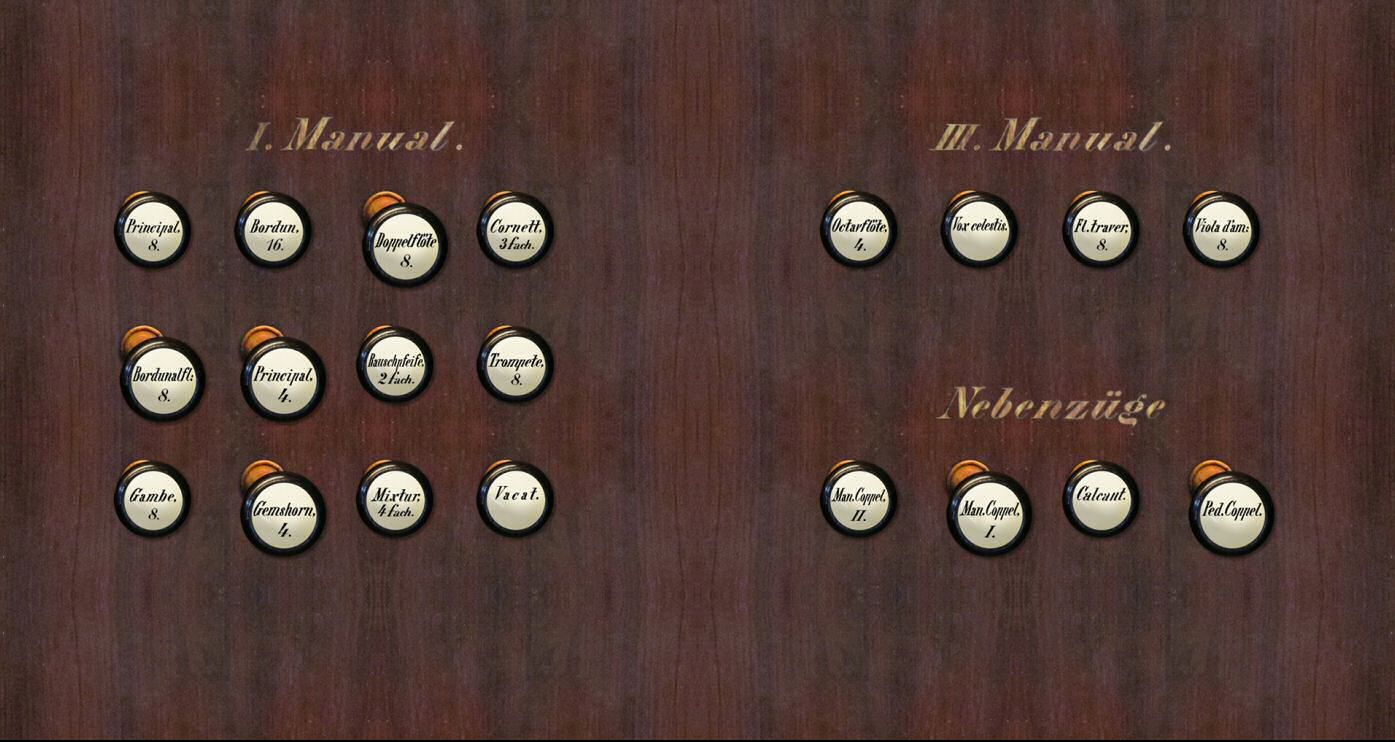1885 Friedrich Ladegast
Wernigerode, Sachsen-Anhalt/Germany
Short Introduction and History
This mid-sized work of Friedrich Ladegast is one of his last examples of a three-manual mechanical action organ with manual cone-valve chests, a slider pedal chest and a Barker machine.
Except for the reconstruction of the tin front pipes and the replacement of the Lieblich Gedackt on Manual III by a Vox Coelestis, carried out by Oskar Ladegast, the instrument is completely original.
The instrument was comprehensively restored by the firm of Schuke (Potsdam) in 1989-1991, providing us once again with one of the last original organs from this period. A general overhaul of the organ was completed in 2010 by the firm of Hüfken (Halberstadt), following the renovation of the church.
The organ has a wide range of tonal colours, from Baroque-like sounds to the early Romantic period with delicate and expressive flute tones, to the powerful eight foot sounds of the late Romantic. The wide range of eight and four foot stops offer many possibilities in building up the plenum.
Ladegast takes a special position within the German Romantics, such as with the classic repetitive Mixtures and a large number of distinctive and idiosyncratic foundation stops.
The beautiful string and flute stops such as the Doppelflöte, Flauto amabile, Flauto travers, Gamba and Salicional, each with a strong individual character but with excellent mixing qualities, offering a wide array of tonal colours.
See Location in Googlemaps
Recording technique
The organ was recorded in July 2012 with 48 kHz, 24 bit, multi-channel for Hauptwerk 4, using the multi-release technique introduced by OrganArt. The stops were recorded with multiple release levels for short, medium and long key attacks for optimal acoustical mapping. The set supports 4-channel surround/variable listening perspective.
Thanks
I would like to thank the parish of St. Johannis for supporting this project.
Special thanks for local assistance by organ workshop Reinhard Hüfken, Halberstadt for a stand-by organ maintenance service and helpful information!
Virtual Console
Specification
Manual I (C–f3*)
|
Manual III (C–f3*)
|
Temperament: Equal (a1=440 Hz)
Tracker:
Cone-valve chest with mechanical tracker action,
Barker machine for Manual I
Additional stops
Manual Coupler I (II-I)
Manual Coupler II (III-I)
Pedal Coupler (I-P)
Calcant
Playing Aids
Collecting levers
Pedal Forte, Piano
Manual Mezzoforte, Forte, Fortissimo
Swell lever Man. III
Requirements
Loaded Version |
Memory Requirements 3) |
Processor Speeds 2) |
|
Two-Channel Configuration |
2600 MB |
≥ 2 GHz DualCore |
|
24-bit, compressed, all loops |
4500 MB |
≥ 2 GHz DualCore |
|
Four-Channel Surround Configuration |
4600 MB |
≥ 2 GHz DualCore |
| 24-bit, compressed, all loops |
8400 MB |
≥ 2 GHz DualCore |
1) Lossless compression (no loss of sound quality!)
2) Minimal configuration: Dual-Core, 8 GByte RAM
Optimal configuration: QuadCore, 32 GByte RAM
3) To load this organ into Hauptwerk you will need enough free memory in your computer, due to the amount of playable stops, not including the operating system or any other programs that may be running!
Demos
The following demo pieces were recorded with the Hauptwerk V4 Advanced Edition software and the Ladegast organ set, with no additional effects processing:
Under construction
Numerous other live recordings can be found on the ConcertHall Website
(Advanced Search, Organ: OAM - F. Ladegast Surround)
© OrganArt Media, all rights reserved
No demo sounds may be used or transmitted in any form for public purposes without the prior written permission of the publisher!For live demo examples please visit Concert Hall-Website (Search "Ladegast")
Informations, Discography and Weblinks
Discography (Selection):
Die Ladegast-Orgel zu Wernigerode: Orgelmusik aus Deutschland, Frankreich und Belgien
Konrad Paul, motette MOT 13741







